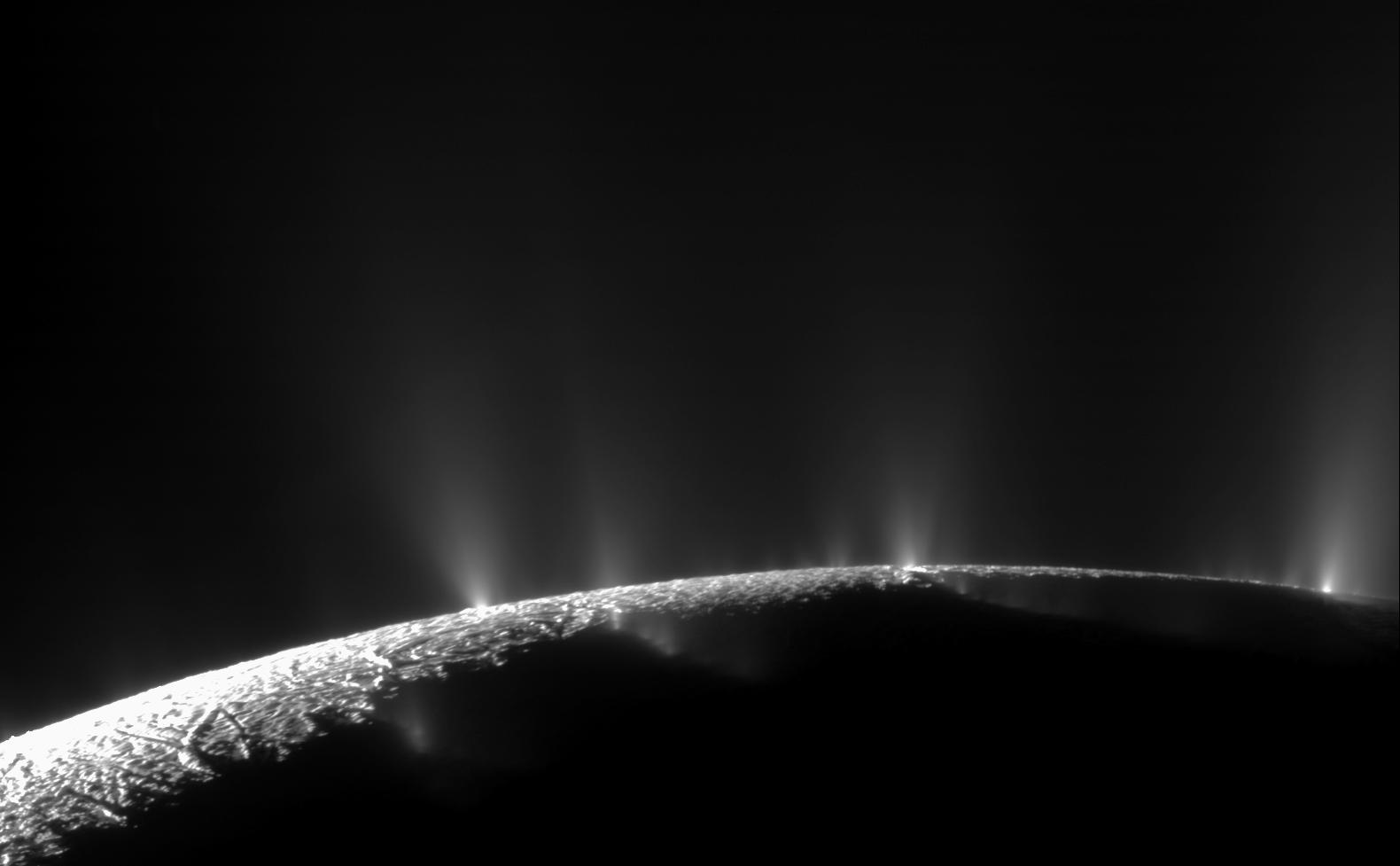5 min read
Cassini Significant Event Report
For Week Ending 01/31/03
The most recent spacecraft telemetry was acquired from the Goldstone tracking station on Wednesday, January 29. The Cassini spacecraft is in an excellent state of health and is operating normally. Information on the spacecraft's position and speed can be viewed on the "Present Position" web page.
On-board activities this week included Radio and Plasma Wave High Frequency Receiver (RPWS) calibrations, uplink and execution of a Cosmic Dust Analyzer flight software checkout mini-sequence, Composite InfraRed Spectrometer functional and mute/unmute tests, and uplink and execution of an ACS Reaction Wheel Assembly friction test.
The Spacecraft Operations Office power analyst has distributed the quarterly Radioisotope Thermoelectric Generator (RTG) report. The RTGs continue to provide power at the expected levels and are trending nominally.
This week JPL hosted members of the Cassini science community and interested members of the flight team for Cassini's #30th meeting of the Project Science Group (PSG).
The Science Planning manager gave a presentation at the PSG meeting that included metrics for Science Operations Plan (SOP) development. SOP integration is 55% complete covering revs 0, A-C and 1-26, and SOP implementation is 14% complete covering tour sequences S9 through S14. The SOP will be completed by January 2005.
The Command and Data Subsystem (CDS) Flight Software Team held a successful Software Requirements and Certification Review for version V9 of the CDS flight software. This final delivery is a major milestone in the spacecraft flight software development. V9 will provide all the CDS capabilities required for orbital tour operations as well as the Saturn Orbit Insertion and Probe Relay. The Flight Team will uplink the software in February and begin a detailed checkout of the software on the spacecraft beginning in late March.
The Ion and Neutral Mass Spectrometer Instrument (INMS) engineering model and support equipment arrived at JPL. The instrument will be incorporated into the spacecraft bus in the Cassini Integrated Test Lab (ITL) for tests of INMS flight software loading from the Command and Data Subsystem. An additional objective of the tests will be to validate the process of obtaining ITL bus data and converting it to a format for use by the instrument's Remote Terminal Interface Unit (RTIU).
A delivery coordination meeting was held to review the functionality of Spacecraft Operations Office Propulsion Tools V1.0, and to coordinate installation. The delivery was comprised of the Bipropellant System Performance Tool, used to generate bipropellant propulsion system performance predictions and reconstructions, the Monopropellant System Performance Tool, used to generate monopropellant propulsion system performance predictions and reconstructions, Tanks Models, used to calculate the physical properties of five Cassini propellant and pressurant tanks, and the Mass Properties Model which calculates the spacecraft dry and wet centers of mass and the wet and dry inertial properties matrices.
A Cassini Archive Design Peer Review was held this week for the Magnetospheric Imaging Instrument, Composite InfraRed Spectrometer, Ultraviolet Imaging Spectrograph, and RPWS instruments. Presentations showed much progress in team Planetary Data System (PDS) archive plans, and that help from the project and PDS is needed to resolve open items. Minutes and action items generated from the Recommendations for Action will be posted by February 7th.
The Imaging Science Subsystem (ISS) used a new feature of the Remote Terminal Interface Unit (RTIU) to confirm that a fix to the command database (CDB) had been implemented correctly. To support RTIU operation, Instrument Operations has developed a script that will automatically take an instrument Spacecraft Activity Sequence Files (SASF) as input, run seqgen and seqtran, and produce a script in a format that the RTIU can understand. ISS processed the same SASF file with both the old and new versions of seqgen and seqtran. This confirmed that the change to the CDB had been made correctly. There are plans to implement a web page interface to allow RTIU users to translate their own SASFs. Currently, the scripts must be run by hand.
The Uplink Operations Mission Sequence Subsystem (MSS) Engineer provided an overview of the MSS D9.0 delivery contents, and an advanced look at the future schedule, at the PSG meeting on Tuesday. The information was generally well received with the expected concerns voiced over the delay in some functionality. The attendees were also made aware of a one-week delivery slip. This slip will allow time to incorporate some urgent changes, including support of TCM-19, and redo associated testing.
The Principal Investigator for the RPWS was featured on NPR's Morning Edition on 1/23/03. NPR reported: "In space, one cannot hear sounds. But a new musical work --commissioned by NASA -- is based on radio waves gathered from the far reaches of the solar system. For Morning Edition, Gayane Torosyan of member station WSUI reports on Sun Rings, composed by Terry Riley and performed by the Kronos Quartet. The work includes sounds collected over 40 years by University of Iowa physicist Don Gurnett." For more information connect to https://www.npr.org/templates/story/story.php?storyId=930399.
Additional information about Cassini-Huygens is online at http://saturn.jpl.nasa.gov.
Cassini will begin orbiting Saturn on July 1, 2004, and release its piggybacked Huygens probe about six months later for descent through the thick atmosphere of the moon Titan. Cassini-Huygens is a cooperative mission of NASA, the European Space Agency and the Italian Space Agency. JPL, a division of the California Institute of Technology in Pasadena, manages the mission for NASA's Office of Space Science, Washington, D.C.
Media Relations Office
Jet Propulsion Laboratory
California Institute of
Technology
National Aeronautics and Space
Administration
Pasadena, Calif. 91109.
Telephone (818) 354-5011







